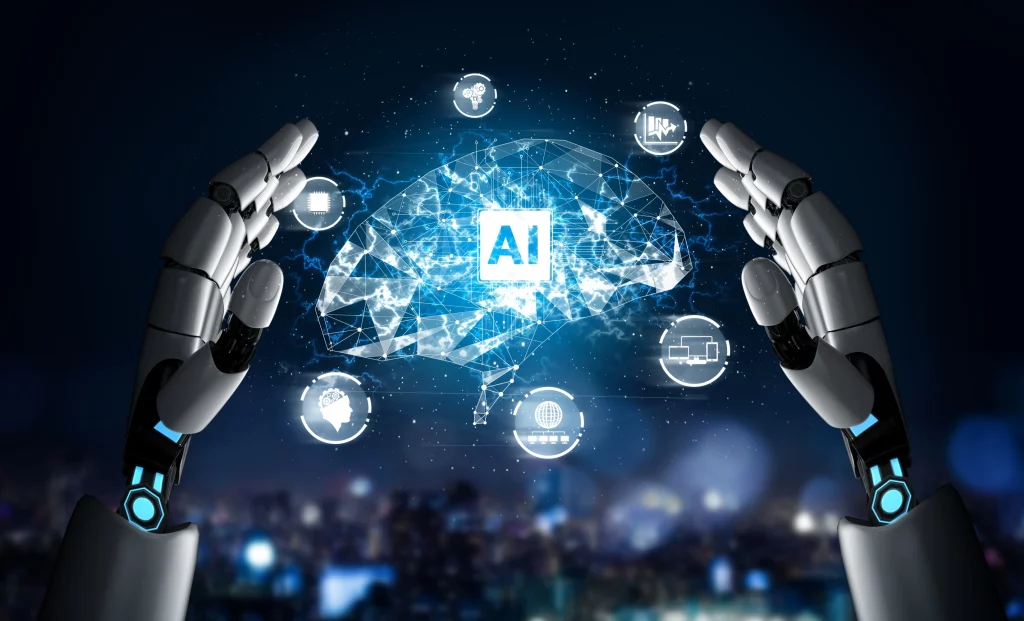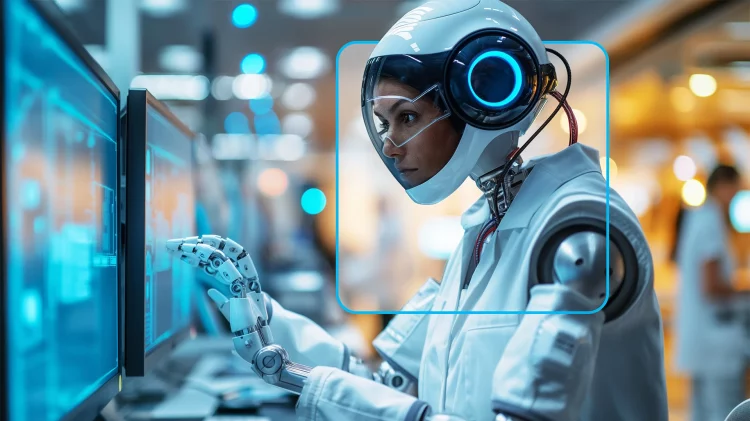In the early 21st century, the world witnessed an unprecedented surge in technological innovation. Among the most transformative breakthroughs, artificial intelligence (AI) and machine learning (ML) stand out as the catalysts driving this change. Once perceived merely as tools designed to perform specific tasks, AI and ML have evolved into powerful entities that are not only reshaping industries but also taking on roles previously reserved for human creators and thinkers. This article explores the rise of AI and ML, their increasing ability to generate novel ideas, their impact on various sectors, and the potential future implications as these technologies move from being instruments of productivity to autonomous creators.
The Evolution of AI and ML: From Tools to Creators
The Early Days of AI and ML
Artificial Intelligence, as a concept, has its roots in the mid-20th century. Pioneers such as Alan Turing and John McCarthy laid the groundwork for what we now call AI. Early AI systems were rule-based and could only mimic human intelligence in very limited ways—be it through chess-playing algorithms or expert systems designed to solve specific problems. Machine learning, a subset of AI, further expanded the capabilities of these systems by allowing them to learn from data, rather than relying solely on hardcoded rules.
In the early stages, both AI and ML were simply tools designed to augment human capabilities. They automated tedious tasks, optimized existing processes, and enhanced decision-making through data analysis. However, the evolution of computing power, the advent of big data, and breakthroughs in algorithm design set the stage for the transformative capabilities we see today.
From Tools to Innovators: The Rise of Generative AI
The true shift from AI and ML as mere tools to autonomous creators can be traced to the development of generative models. These models, such as Generative Adversarial Networks (GANs) and Variational Autoencoders (VAEs), are capable of creating original content—ranging from art and music to writing and even entire scientific theories. In short, AI is no longer just an assistant but a potential creator in its own right.
For instance, GANs work by having two networks—one generating content and the other evaluating it—compete with each other to improve their outputs. This framework allows AI to produce new, realistic images, designs, or even realistic deepfake videos. In literature and media, natural language processing (NLP) models like OpenAI’s GPT series or Google’s BERT have demonstrated their ability to generate coherent and contextually rich text that can imitate human writing styles.
The Role of Creativity in AI and ML
Traditionally, creativity has been seen as a distinctly human trait, associated with artistic expression, problem-solving, and innovation. However, as AI and ML algorithms become more sophisticated, they have begun to exhibit characteristics of creativity. These systems don’t just follow instructions—they learn from vast datasets, discern patterns, and generate solutions that may not have been conceived by their human programmers.
For example, AI has been used to compose music in the style of classical composers, generate original works of art, and even write poetry. While these creations may not carry the same “soul” or personal touch that a human artist might inject, they nevertheless challenge our traditional understanding of creativity. Some researchers and artists now collaborate with AI to explore new frontiers in the creative process, effectively making AI a partner in the act of creation.
The Impact of AI and ML on Various Sectors
Healthcare: Revolutionizing Diagnosis and Drug Discovery
One of the most significant impacts of AI and ML is in the healthcare sector. These technologies have already demonstrated their ability to outperform human doctors in diagnosing certain diseases and conditions. By analyzing vast amounts of medical data, AI can detect patterns and anomalies that may go unnoticed by the human eye. For instance, AI models have been employed to detect early-stage cancers from medical imaging, identify genetic mutations linked to diseases, and even predict patient outcomes with remarkable accuracy.
In drug discovery, AI is speeding up the development of new treatments. Traditionally, drug development is a lengthy and expensive process, but AI can analyze biological data, simulate molecular interactions, and identify promising drug candidates much faster than human researchers. In fact, AI has already contributed to the identification of new drug molecules, significantly reducing the time and cost of clinical trials.
Finance: Automating Decision-Making and Risk Management
In the financial industry, AI and ML are fundamentally transforming the way decisions are made. Algorithmic trading systems are already using AI to predict market trends, execute trades in real-time, and optimize investment portfolios. By processing large datasets from diverse sources, AI systems can identify patterns and correlations that human traders may overlook, leading to smarter investment strategies.
Moreover, AI’s ability to assess risk is being leveraged by banks and insurance companies to develop more accurate models for underwriting, fraud detection, and credit scoring. For example, machine learning models can analyze credit histories and transaction patterns to predict an individual’s creditworthiness with greater accuracy than traditional methods. This results in more personalized financial services and reduced risk for financial institutions.
Entertainment: Revolutionizing Content Creation and Personalization
In the entertainment industry, AI and ML are changing the way content is created, distributed, and consumed. AI-driven tools are now being used to assist in scriptwriting, video editing, and even directing. For example, AI can analyze successful movies and TV shows to predict what elements make them popular, helping content creators craft more engaging narratives.
Streaming platforms like Netflix and Spotify are leveraging machine learning algorithms to personalize recommendations for their users. By analyzing viewing and listening habits, these platforms suggest content that is likely to appeal to each individual, enhancing user experience and engagement. Furthermore, AI is now capable of creating entirely new forms of entertainment, such as interactive video games where player choices shape the narrative, or AI-generated music tailored to specific moods or preferences.

Education: AI as a Teacher and Learning Companion
AI is also making its mark in the education sector. AI-powered tutoring systems can provide personalized learning experiences by adapting to the needs of individual students. These systems assess the learner’s strengths and weaknesses and deliver customized lessons that improve comprehension and retention.
In addition, AI can automate administrative tasks such as grading and scheduling, freeing up educators to focus on teaching. Furthermore, AI can analyze student performance data to identify trends and predict academic outcomes, allowing educators to intervene when necessary and provide targeted support to struggling students.
Manufacturing: Optimizing Production and Quality Control
The manufacturing industry has long been an adopter of automation, but AI and ML are now taking this to new heights. AI-powered robots and machines are increasingly capable of performing complex tasks that once required human intervention, such as assembling products, testing prototypes, and conducting quality control inspections.
Machine learning algorithms are used to optimize production schedules, predict maintenance needs, and ensure that equipment is running at peak efficiency. These AI-driven systems can analyze data from sensors embedded in machines to detect early signs of wear and tear, minimizing downtime and reducing operational costs.
Ethical Considerations: The Double-Edged Sword of AI
While the rise of AI and ML presents remarkable opportunities, it also raises important ethical questions. As AI systems become more capable, there are concerns about their impact on jobs and human workers. Automation powered by AI may lead to the displacement of workers in industries ranging from manufacturing to customer service. The question of whether AI will enhance human labor or replace it entirely is a critical issue that policymakers, business leaders, and technologists must address.
Moreover, there are concerns about the potential misuse of AI in areas such as surveillance, privacy, and security. Deepfake technology, which uses AI to create hyper-realistic fake videos, has the potential to undermine trust in media and public figures. There is also the risk of AI systems perpetuating biases present in the data they are trained on, leading to unfair or discriminatory outcomes in areas like hiring, lending, and criminal justice.
As AI becomes more autonomous, the question of accountability arises. If an AI system makes a decision that causes harm, who is responsible? Is it the creators of the AI, the users, or the AI itself? These are complex legal and moral issues that will require new frameworks and regulations to ensure that AI is used responsibly.
The Future of AI: Autonomous Creators or Collaborators?
Looking ahead, the trajectory of AI and ML suggests that these technologies will continue to evolve, potentially leading to the rise of autonomous creators—systems capable of producing original work without human intervention. However, it is more likely that AI will serve as a collaborator rather than a replacement for human creativity. In fields like art, literature, and music, AI may provide new tools and insights, enabling humans to push the boundaries of their creative potential.
For instance, AI might not replace the role of a writer, musician, or painter, but it can serve as a powerful tool that enhances human creativity. It can suggest new ideas, provide inspiration, or even handle mundane aspects of the creative process, allowing human creators to focus on the more profound aspects of their work. The future of AI as a creator or collaborator will depend largely on how society chooses to integrate these technologies into the creative industries.
Conclusion
The rise of artificial intelligence and machine learning marks a pivotal moment in human history. These technologies have moved far beyond their original role as tools for enhancing human productivity; they are now creators in their own right, capable of producing novel ideas, artworks, and even solving complex problems that once seemed insurmountable. As AI and ML continue to evolve, their potential to reshape industries, improve lives, and drive innovation is immense.
However, the rise of AI also brings with it significant ethical and societal challenges. As we continue to develop and deploy these technologies, it is crucial that we address issues such as job displacement, bias, privacy, and accountability. Ultimately, the future of AI and ML will depend not only on their technical advancements but also on how we, as a society, choose to manage and integrate them into our world.
In this new era of AI-driven creativity, the line between human and machine becomes increasingly blurred. Yet, rather than viewing AI as a threat to human ingenuity, we should embrace it as a partner, enhancing our collective potential and opening up new avenues for discovery and innovation. As AI continues to evolve, the future of creativity and innovation is bound to be defined not just by what machines can create, but by how they collaborate with us to imagine the impossible.











































